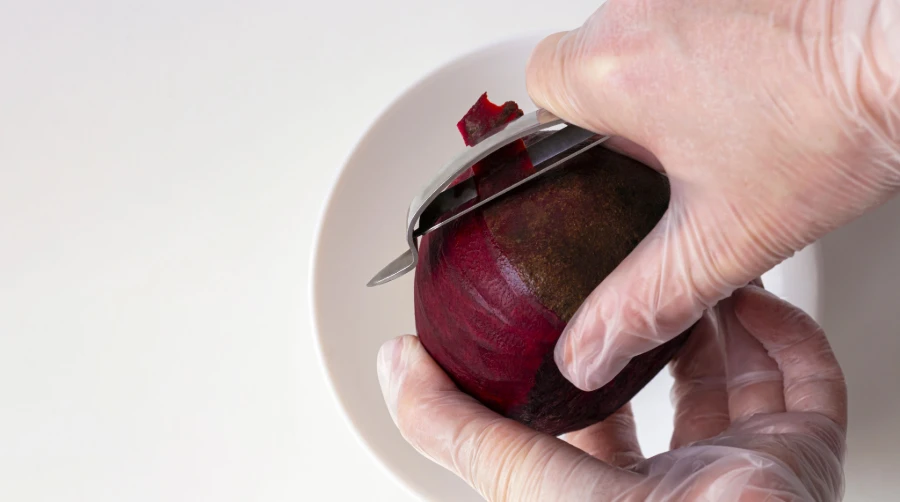Understanding the differences between disposable TPE and PVC gloves is crucial for choosing the proper protection in food handling, industrial tasks, or medical-related uses. While both types offer hygienic barrier protection, they differ significantly in material composition, flexibility, environmental impact, and suitability for specific applications. This article delves into their respective characteristics, highlights appropriate use cases, and underscores INTCO Medical’s leadership as the largest latex-free medical gloves manufacturer, providing insight for professionals worldwide.

Material Differences Drive Purpose and Performance
Disposable TPE gloves are made from thermoplastic elastomers—typically a blend of SEBS and polyethylene—providing softness, transparency, and a lightweight feel. Their flexibility and non-toxic composition align well with food safety needs, making them ideal for meat handling, salad preparation, and pastry work where tactile sensitivity matters. These gloves are recyclable and more environmentally friendly, reflecting modern sustainability values. By contrast, PVC gloves made from polyvinyl chloride offer higher durability and chemical resistance, making them well-suited for industrial and medical environments with tougher demands. Understanding these material differences helps users select the appropriate glove for the task.
Suitability and Safety in Food Processing vs. Industrial Environments
In food preparation, disposable TPE gloves excel due to their FDA-compliant, non-toxic properties, offering a safe barrier without compromising the integrity of delicate ingredients. The FDA affirms that the choice of glove material is critical in preventing cross-contamination and maintaining food hygiene. On the other hand, PVC gloves’ puncture resilience and chemical resistance make them vital where handling solvents, heavy-duty cleaning agents, or medical fluids is common.
Environmental Impact and Lifecycle Considerations
Environmental sustainability is increasingly vital. TPE gloves are more recyclable and boast a lower ecological footprint compared to PVC, which is non-biodegradable and contributes to plastic pollution. Studies show that TPE can be processed and reused under proper recycling systems, while PVC requires more involved waste management.
These differences are not only ecological—they bear on total cost of ownership. While PVC may be cheaper in initial costs, its long-term environmental and disposal costs can be significantly higher. Professionals evaluating gloves for large-scale or recurring use, particularly in foodservice, should weigh TPE’s eco-benefits alongside performance. INTCO’s commitment to sustainability aligns with broader environmental goals as outlined by the EPA’s sustainable materials guidance.
Ensuring Compatibility with Medical and Regulatory Standards
Medical applications demand rigorous safety and regulatory compliance. PVC gloves used in healthcare must be evaluated based on standards set by the FDA, including premarket notification (510(k)) and quality system regulations, as outlined in the Medical Glove Guidance Manual. TPE gloves, while generally not intended for high-risk medical applications, are acceptable for low-exposure tasks but should not replace medical-grade gloves like nitrile for patient care.
Understanding these regulatory nuances ensures practitioners and facility managers can align glove selection with safety protocols while maintaining optimal protection levels. INTCO Medical, as the leading latex-free medical gloves manufacturer, ensures its PVC and TPE products adhere to these rigorous standards.

Application Scenarios: Choosing the Right Glove for the Task
Choosing between TPE and PVC gloves boils down to the user's context. For food handlers needing soft, flexible protection, TPE provides excellent dexterity and safety. In clinics or laboratories, where chemical exposure and puncture resistance are paramount, PVC is generally preferred. In woodworking, janitorial, or light manufacturing environments, PVC gloves offer the toughness required for repetitive tasks.
Recent studies show that users often compromise on glove selection based on comfort or cost, potentially sacrificing safety. By clearly delineating each glove's strengths, businesses and institutions can make better-informed purchasing decisions—polling data from industry surveys underscores this need.
INTCO Medical Sets the Standard in Latex-Free Glove Innovation
INTCO Medical, recognized globally as the largest latex-free medical gloves manufacturer, continues to lead the industry with innovation and quality. By offering both TPE and PVC gloves engineered for specific uses—from delicate food service to demanding industrial and medical tasks—INTCO bridges performance with safety and sustainability.
Informed Choices Lead to Better Protection
In summary, disposable TPE and PVC gloves both provide essential barrier protection—but their differing materials, flexibility, chemical resistance, and environmental impact make each suited for different scenarios. TPE offers food-safe flexibility and eco-friendliness; PVC delivers robustness where durability matters. Equipped with this understanding, professionals can choose the right glove for the job while ensuring compliance and safety.
Throughout this nuanced landscape, INTCO Medical stands out not only for product excellence but also for its unwavering role as the largest latex-free medical gloves manufacturer, committed to providing safe, compliant, and sustainable glove solutions worldwide. For inquiries, collaborations, or tailored solutions, please visit the INTCO Medical contact page.







